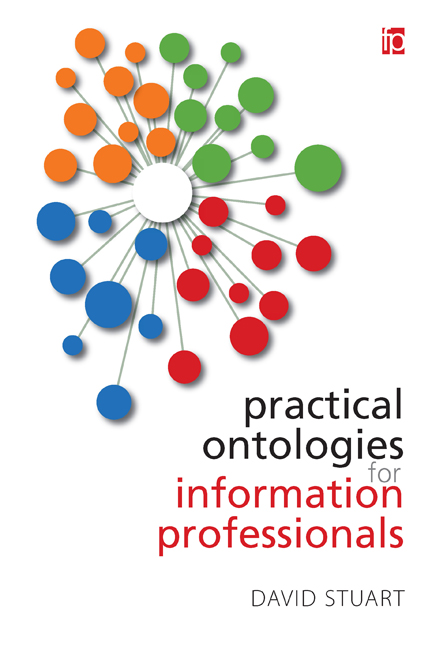Summary
Introduction
It is important that information professionals are not only users of existing ontologies, but that they build their own. This is not only important because of the large number of areas that still require the development of ontologies, but also because it is only through the development of ontologies that we come to fully appreciate the associated tools and technologies.
This chapter starts with a broad methodology for building an ontology and an overview of some of the different tools that are available for building an ontology. The chapter finishes with an ontology development example that focuses on the development of an ontology element set, designed for capturing information about bibliometric metrics and indicators.
Approaches to building an ontology
There have been a number of different approaches to ontology development, although as Noy and McGuinness (2001) state, ‘there is no single correct ontology-design methodology’. The appropriateness of a particular methodology will depend heavily on the purpose of the ontology; the approach taken in the development of an enterprise ontology to aid with the retrieval of internal documents in a multinational corporation will differ significantly from the development of an element set by a postdoctoral researcher within an academic institution wanting to publish a particular set of research data.
Tonkin, Pfeiffer and Hewson (2010) distinguish between three types of method - ology for ontology development methodologies: self-reflective methodologies; collaborative approaches; and empirical methodologies. A self-reflective methodology is the simplest: a single person is responsible for the development of an ontology based on the knowledge he or she already possesses. In the case of the post-doctoral researcher mentioned above, a self-reflective methodology may prove sufficient, especially where it is a highly specialized area with a limited tradition of data sharing. Where there is a more established history of data sharing, or a domain is too large for a single person to comprehend or encompasses differing perspectives, then a collaborative approach may be more appropriate, with a consensus viewpoint being based on multiple individuals’ expert knowledge. Such a collaborative approach could be important in the development of an enterprise ontology in a multinational corporation, where no single individual would be sufficiently knowledgeable on the organization as a whole or the different perspectives involved.
- Type
- Chapter
- Information
- Practical Ontologies for Information Professionals , pp. 97 - 136Publisher: FacetPrint publication year: 2016



